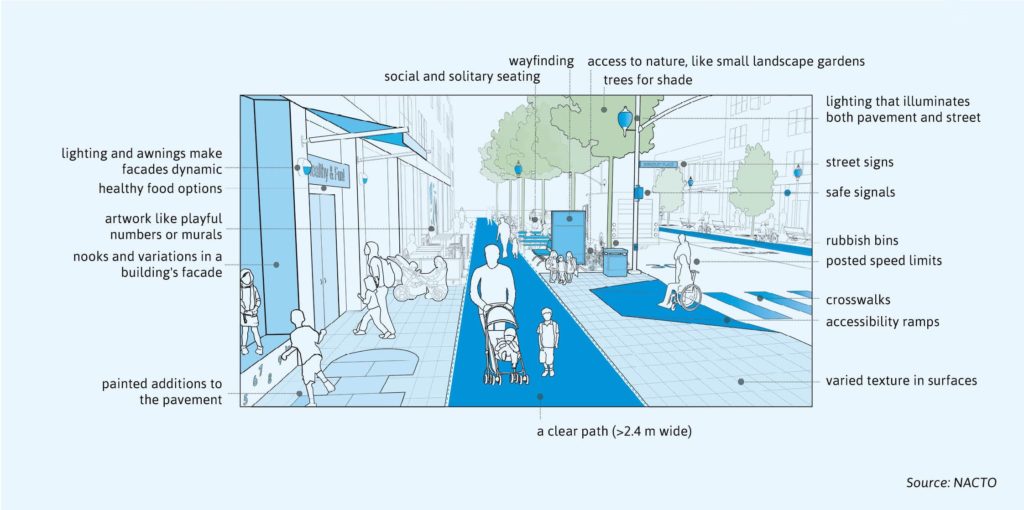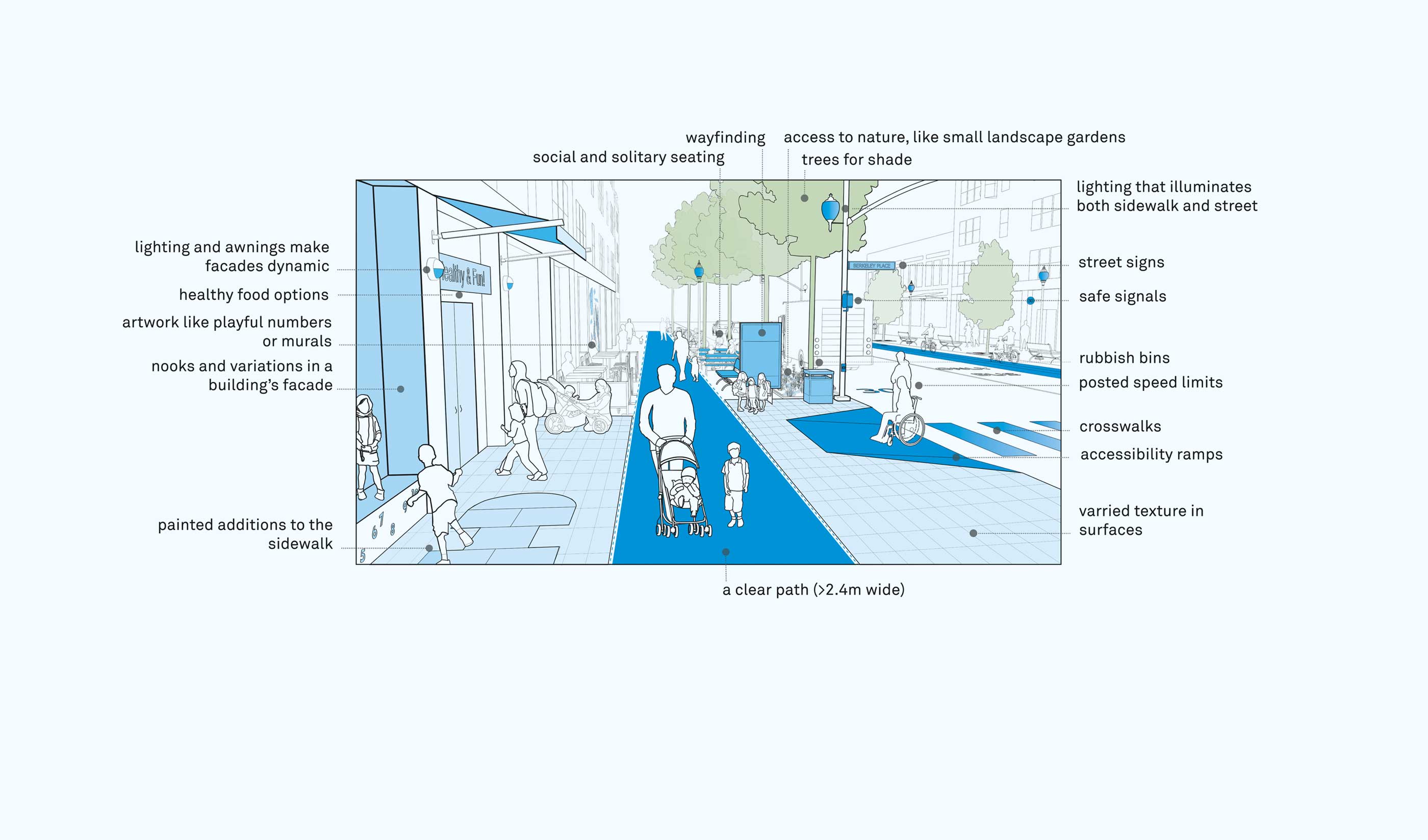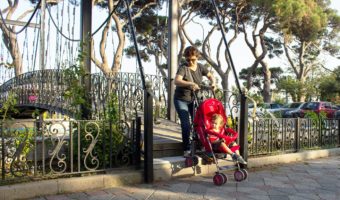Cities around the world offer great examples, large and small, of streets that allow kids to be healthy, safe, and comfortable. The forthcoming design guidebook Designing Streets for Kids, to be published by NACTO in late 2019, will highlight practical strategies to help implement positive changes in cities, as well as examples from around the world.
At the largest scale, planning and zoning codes determine how we distribute different land uses, where we place key destinations, and urban density. Investment in transport systems affects access to quality education, public open space and healthcare services. The speed of traffic and the amount of space prioritised for people dictate whether a child or caregiver feels safe cycling to daycare, walking to school or taking public transport during rush hour.
And the smallest details matter. The design of buildings, where we place building entrances and windows, and where we plant trees all shape our experience. This experience can play a crucial role in making the choice of whether to move on foot or by car. Frequent entrances and windows, for example, create a sense of security by adding ‘eyes on the street’. Trees provide protection from the heat. Well-placed lighting ensures that streets feel safe at all hours of the day. Architectural details such as awnings and small recesses provide spaces for children and caregivers to pause, to grab a snack, or to embrace a momentary meltdown.
The presence and slope of a kerb ramp allow a person with a pushchair or an assisted mobility device to access a safe pavement. A clear path on a pavement – with a width of 2.4 metres (absolute minimum 1.8 m) – allows a continuous and safe journey for families to walk next to each other, and a pause space on a pavement with a thoughtful bench placement determines if parents are able to comfortably feed or breastfeed in the shade, potentially extending the time they are able to leave the house with a baby.
Infrastructure and mobility choices accommodating needs for multiple stops in a single journey can have wide-reaching impacts. Dedicated transit lanes painted on larger streets means a more reliable bus service, so parents or caregivers can drop their children at daycare and still reach their jobs on time. Bike share programmes with kids’ seats allow a family to explore a new neighbourhood or accept a social invitation that may have been otherwise too far away, encouraging both physical and social well-being. Proper drainage details ensure that standing water will not be a breeding ground for waterborne diseases.

Simple design details can greatly improve how children and caregivers experience a street
Studies show that the built environment affects development and cognitive abilities, and can bring joy to its youngest users and their caregivers. A transport stop that includes artwork and games encourages children’s critical thinking skills while filling waiting times with fun distraction. Herbs planted beneath street trees spark their sense of smell, and proper maintenance ensures that a grandparent feels comfortable allowing a child to interact with plants and nature on a neighbourhood walk.
While overall continuous surfaces are particularly important in ensuring accessibility for people walking and cycling, small details in paving patterns, markings, or textures within the footpath can add playful opportunities for young kids to learn and explore within their daily walking journeys. Clear wayfinding signage helps people to make decisions about their journeys by informing them how long it will take to walk, cycle or take transport to various destinations.
In short, we need to re-focus on people – especially children – in our urban streets, inspiring leaders, informing practitioners and empowering communities. Streets might look and feel different from one corner of the globe to the next, but the principle of designing streets from the perspective of a child is universal.




